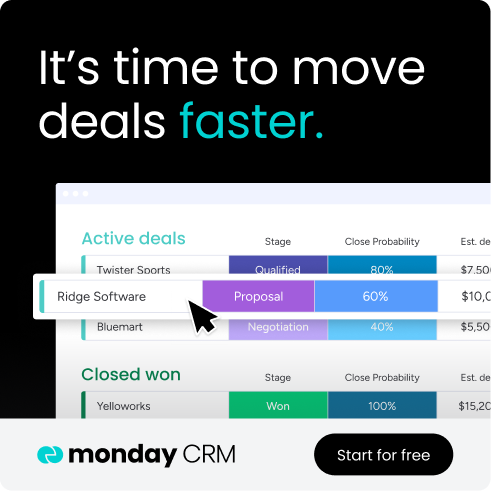David Hartshorne is an experienced writer and the owner of Azahar Media. A former global support and service delivery manager for enterprise software, he uses his subject-matter expertise to create authoritative, detailed, and actionable content for leading brands like Zapier and monday.com.
One platform for better teamwork
with monday.com Work OS
 Get started
Get started 
Home > CRM and sales > The ultimate guide to managing your sales orders effectively


